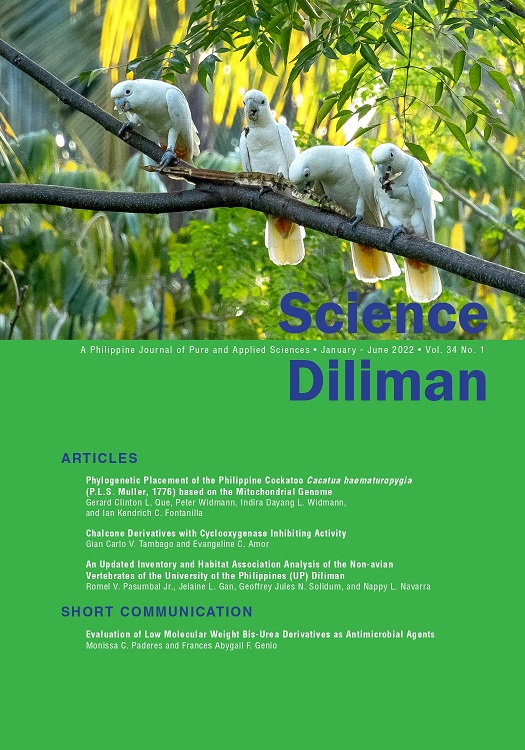An Updated Inventory and Habitat Association Analysis of the Non-avian Vertebrates of the University of the Philippines (UP) Diliman
Abstract
An inventory of the non-avian terrestrial vertebrate species found within the 493-hectare land area of the UP Diliman campus is presented. Visual encounter surveys for amphibians and reptiles, as well as mist-netting and trapping for mammals, were conducted last August 2019 to early February 2020 on selected study grids on campus. To determine habitat associations, the species richness of each vertebrate class (i.e., amphibia, reptilia, and mammalia) was analyzed with habitat characteristics of the grid using regression analysis. Based on the surveys and recent records (2015 onwards) in literature, a total of 33 species were recorded: seven amphibians, 15 reptiles, and 11 mammals. Comparison with historical records from 1998 revealed that an additional two amphibian species, seven reptile species, and six mammalian species have been sighted within the area since 2015. However, a fork-tongued frog, falling under the genus Fejervarya, and four reptilian species that had previously been recorded within the study sites were not observed. Habitat association analysis revealed that building area is correlated with species richness, with reptilian species richness being positively correlated with it. Overall, this study shows that the UP Diliman campus supports considerable urban biodiversity despite recent developments.
Published
2022-09-23
How to Cite
PASUMBAL JR., Romel V. et al.
An Updated Inventory and Habitat Association Analysis of the Non-avian Vertebrates of the University of the Philippines (UP) Diliman.
Science Diliman: A Journal of Pure and Applied Sciences, [S.l.], v. 34, n. 1, sep. 2022.
ISSN 2012-0818.
Available at: <https://journals.upd.edu.ph/index.php/sciencediliman/article/view/8796>. Date accessed: 25 sep. 2025.
Issue
Section
Articles
Submission of a manuscript implies: that the work described has not been published before (except in the form of an abstract or as part of a published lecture, review, or thesis); that it is not under consideration for publication elsewhere; that its publication has been approved by all co-authors, if any, as well as by the responsible authorities at the institute where the work has been carried out; that, if and when the manuscript is accepted for publication, the authors agree to the automatic transfer of the copyright to the publisher; that the manuscript will not be published elsewhere in any language without the consent of the copyright holders; that written permission of the copyright holder is obtained by the authors for material used from other copyrighted sources; and that any costs associated with obtaining this permission are the authors’ responsibility.



